The Foundation of Equine Nutrition: What Every Horse Owner Needs to Know About Forage

Understanding Forage: The Complete Guide to Hay, Pasture, and the Foundation of Every Equine Diet
Forage isn’t filler — it’s foundation.
It’s the part of the diet that connects horses to their wild ancestry and to the land itself. From Kentucky bluegrass pastures to Florida bermudagrass and the alfalfa valleys of the West, forage tells the story of where our horses come from — and how well we understand their biology.
Whether your horse competes, recovers, or simply grazes in peace, forage remains the cornerstone of equine health. It fuels digestion, steadies temperament, and supports every physiological system — from hooves to hormones.
To feed well is to begin here. This guide explains what forage truly is, how to evaluate its quality, and why the best nutrition blends data, observation, and compassion.
Section 1: What Is Forage?
Forage refers to plant material — mainly grasses and legumes — consumed fresh (pasture) or preserved (hay, haylage, silage).
Horses evolved as continuous grazers, eating 16–18 hours a day. Their digestive system depends on this slow, steady intake of fiber for gut movement and microbial balance.
Core functions of forage:
- Provides slow-release energy through fiber fermentation
- Maintains saliva flow, buffering stomach acid
- Sustains beneficial microbes that produce B-vitamins and short-chain fatty acids
- Promotes mental calm by keeping horses chewing and occupied
“To understand a horse, watch how it eats. To care for a horse, honor that rhythm.”
— Equine Balanced Support Philosophy
Section 2: The Main Types of Forage
A. Fresh Forage (Pasture)
Description: Living grasses and legumes with variable nutrients depending on species, soil, and season.
Benefits:
- Natural hydration, high vitamin E and omega-3s
- Promotes movement and natural grazing behavior
- Often more nutrient-dense than stored forage when managed well
Risks:
- High sugar (NSC) in spring/fall
- Variable mineral content; soil deficiencies or excesses
- Overgrazing, mud, or drought stress can concentrate sugars
Regional Insight:
- Southeast U.S.: Bermudagrass, Bahia grass — lower NSC, good for metabolic horses.
- Northeast & Midwest: Timothy, orchard grass, bluegrass — nutrient-dense but seasonally sugar-rich.
- Mountain West: Alfalfa and mixed hay pastures — highly nutritious yet calcium-heavy.
B. Conserved Forage (Hay, Haylage, Silage)
When pasture is limited, hay becomes the primary forage source.
Hay: Dried forage (~10–15% moisture). Early-cut hay is softer and more digestible; later cuttings are higher in fiber.
Haylage/Silage: Fermented and sealed for preservation (40–60% moisture). Retains nutrients and palatability but demands careful storage to prevent botulism.
Tip: Never feed haylage from torn or punctured wraps — invisible spoilage can be dangerous.
C. Processed Forage (Chopped, Cubed, or Pelleted)
Modern feeding introduces convenient options:
- Chopped Hay (Chaff): Dust-extracted, promotes chewing.
- Cubes & Pellets: Consistent, easy to store, ideal for travel or dental issues.
- Complete Forage Diets: Formulated for horses unable to consume long-stem hay.
Processed forms can complement, but not fully replace, long-fiber forage essential for gut motility.
Section 3: Nutritional Differences Between Forage Types
Even hay that looks identical can vary widely in nutrients.
| Forage Type | Crude Protein (%) | Digestible Energy (Mcal/lb) | NSC (%) | Key Notes |
|---|---|---|---|---|
| Alfalfa (Legume) | 16–20 | 1.0 | 8–12 | High calcium & lysine; supports muscle and recovery |
| Timothy (Cool-Season) | 8–12 | 0.8 | 10–16 | Gentle energy; balanced choice for most horses |
| Orchardgrass | 10–14 | 0.85 | 12–18 | Palatable; can spike in sugars during spring |
| Bermudagrass (Warm-Season) | 6–10 | 0.75 | 8–12 | Lower calories; ideal for easy keepers |
| Mixed Pasture | 10–16 | 0.8 | 10–22 | Strong seasonal swings; depends on species and management |
Maturity matters:
Young, leafy forage = high protein and digestibility.
Mature, stemmy forage = more fiber, fewer calories.
Section 4: Understanding Forage Quality
1. Visual Assessment
- Color: Bright green signals good vitamin retention.
- Leafiness: More leaves mean higher nutrient density.
- Smell: Fresh, sweet aroma = healthy. Musty = possible mold.
- Texture: Soft and pliable = early cut; coarse = mature hay.
2. Lab Analysis (The Data Point)
A forage analysis provides a helpful snapshot of key nutrients in your hay or pasture. The most important values to understand include:
-
Crude Protein (CP): Supports muscle, tissue repair, and topline.
-
Digestible Energy (DE): Total calories available from the forage.
-
ADF/NDF: Indicators of fiber maturity and digestibility (higher numbers = more stemmy, less digestible).
Carbohydrates (simple explanation):
-
ESC: Simple sugars that influence insulin response.
-
Starch: Quickly digested carbohydrates absorbed in the small intestine.
-
WSC: ESC + fructans (important for evaluating spring/fall pasture).
-
NSC (WSC + starch): General indicator of laminitis or metabolic risk.
-
HC (ESC + starch): The rapidly absorbed carbohydrates most relevant for EMS, PPID, PSSM, and insulin-sensitive horses.
Minerals:
-
Includes calcium, phosphorus, magnesium, potassium, iron, copper, zinc, and selenium — all key to balancing the diet based on your region and hay type.
Testing isn’t perfect, but it offers a powerful reference point — especially for metabolic, laminitic, or performance horses. Use it as a guide, not a rigid rule.
For a complete breakdown of ESC, WSC, fructans, NSC, and HC — and how to interpret them correctly — read our full guide here.
3. Pasture Evaluation
Healthy pastures reflect diversity. Assess:
- Species mix and sward density
- Grazing rotation to allow regrowth
- Soil tests every 2–3 years for mineral balance
Section 5: The Science — and Limits — of Forage Testing
Hay testing is a valuable guide, but not gospel.
It measures what’s in one sample, not what’s consistently eaten across multiple hay lots, pastures, or storage conditions. In other words, it’s a data point — not a doctrine.
Why test results can’t tell the whole story:
- Sampling bias: One bale or flake rarely represents the whole load.
- Diet variability: Most horses eat several forage sources and seasonal pasture.
- Absorption differences: Gut health, hindgut microbes, and mineral interactions affect how much is actually absorbed.
- Timing: Nutrient levels shift through the year — one test is a snapshot in motion.
“Use science to inform your care, not to replace your intuition.”
— Equine Balanced Support
Practical approach:
- Use hay tests to spot trends (e.g., high iron, low copper).
- Pair data with observation — coat condition, hoof quality, behavior, and recovery often reveal more than numbers alone.
The most balanced nutrition lives between data and discernment.
Section 6: How Processing Changes Forage
Processing changes texture, storage, and nutrient retention:
- Drying: Reduces vitamins A and E.
- Chopping: Improves palatability but speeds intake.
- Compression (Cubes/Pellets): Consistent and clean; minor vitamin loss from heat.
- Fermentation: Preserves energy but demands careful moisture management.
Blending long-stem and processed forage supports both gut movement and convenience.
Section 7: Common Forage Mistakes
- Assuming “smells good” means safe — hidden mold may not smell.
- Feeding alfalfa without balancing calcium and phosphorus.
- Ignoring forage testing entirely — even one report helps pattern recognition.
- Feeding high-NSC hay to metabolic horses.
- Storing hay above 15% moisture — risk of mold or combustion.
- Overlooking regional mineral differences — selenium is low in much of the Northeast.
Section 8: Building the Balanced Diet Foundation
Forage should provide 1.5–2% of body weight (dry matter) daily — 15–20 lb for a 1,000-lb horse. Everything else — concentrates, supplements, and treats — should build on that base.
When to Supplement:
- Energy needs exceed forage supply (growth, lactation, hard work)
- Forage tests show mineral imbalance
- Vitamin E and A decline in stored hay
- Digestive or metabolic issues alter nutrient absorption
Use tools that make this process approachable, like the
👉 Equine Balanced Support Diet Tool
to interpret forage data and customize mineral balance with clarity and confidence.
Section 9: Why Forage Is the Heart of Compassionate Horse Care
Feeding forage well is an act of understanding.
It’s where biology meets empathy — where the caretaker honors the horse’s need to graze, move, and digest in rhythm with nature.
At Equine Balanced Support, we believe in feeding from that place of respect:
where science guides, but compassion leads.
“When you feed forage with understanding, you feed trust, stability, and calm.”
— Treat with Compassion™
FAQ: Forage Testing and Real-World Feeding
Q: Do I need to test every batch of hay?
A: No. Testing is helpful, not mandatory. It offers insight into trends but can’t capture all variability. Use it to guide, not dictate.
Q: My hay test looks fine, but my horse’s coat is dull — why?
A: Nutrient absorption depends on gut health and balance. Even perfect forage may need targeted mineral support.
Q: How can I use hay testing effectively?
A: Identify extremes (very high iron, very low copper/zinc), adjust with a balanced supplement, and reassess over time. Combine lab data with body condition and behavior.
Upcoming Blogs in the Forage Series
- Pasture vs. Hay: Which Is Better and When?
- Legumes vs. Grasses: Decoding the Differences
- Hay Cubes and Pellets: Convenience Without Compromise?
- How to Read a Hay Analysis Report (Without Losing Your Mind)
- Top Forage Mistakes and How to Avoid Them
- Feeding Forage for Special Needs: Metabolic, Performance, Seniors
- Seasonal Pasture Management for Optimal Nutrition
- How Processing Changes Forage: Pelleting, Cubing, Chaff, and More
Conclusion
Forage is more than food — it’s the foundation of equine life.
It shapes digestion, behavior, and the bond we share with our horses.
Testing helps, but observation completes the picture.
Balance lives in both — in the numbers and the nuances, the science and the soul.
Feed the forage first.
Treat with compassion.
Act with intention.





Leave a comment